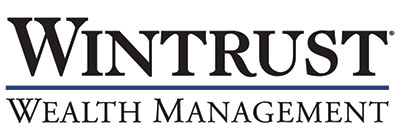Data tokens on this page
Financial Solutions
Financial Solutions
ETFs: Passive, Active, or Smart Beta?
As the popularity of exchange-traded funds has grown, so has their complexity.

Jeffrey G. Sweno, MBA
Senior Vice President
Wintrust Investments
Exchange-traded funds (ETFs) are investment funds that trade on stock exchanges. They have been available in the United States since 1993 and have grown into a $2 trillion market. ETFs commonly track an index, such as the S&P 500–holding assets such as stocks, commodities, or bonds accordingly—and trade close to their net asset value throughout the trading day.
By owning an ETF, investors enjoy the diversification of an index fund as well as the ability to sell short, buy on margin, and purchase as little as one share. Furthermore, ETFs are typically inexpensive and tax-efficient. Since capital gains from sales inside the fund are not generally passed through to the shareholders as they commonly are in mutual funds, taxation on the ETF’s cash flow may be more favorable to the investor. ETFs are structured in such a manner that taxes are minimized for the holder of the ETF and to their ultimate tax bill. It is rare for an index-based ETF to pay out a capital gain.
As the popularity of exchange-traded funds has grown, so has their complexity. ETFs in their original incarnation mirrored various equity and bond market indices and were passively managed by a team of professionals. In March 2007, so-called active ETFs emerged as a niche product. According to data provided by Morningstar, the active ETF industry has grown since then to 128 funds with over $19 billion in assets as of March 31, 2015. Nearly half of those funds have been launched since the start of 2014. While active ETFs are growing in appeal, about 99% of the $2 trillion market is still invested in passive index products.
Actively managed ETFs harness the buy and sell ideas of professional money managers who aim to outperform a benchmark index, much like mutual funds. However, unlike mutual funds, the ETFs allow investors to manage short-term risks by trading intraday and using tools such as limit orders, which set maximum and/or minimum buy and sell prices.
In the ongoing evolution of the ETF industry, a new class of ETFs has recently emerged called smart beta funds. Also referred to as enhanced indexing, new beta, customized beta, beta plus, and smart beta, these ETFs offer an enhanced form of passive index investing. The investment approach used with smart beta ETFs is based on indexes which select and weigh stocks using methods other than the market capitalization weighted approach used by traditional index funds. Utilizing fundamental indexing, smart beta ETFs attempt to limit exposure to over-priced stocks and increase exposure to those companies which are trading at more attractive valuations based on fundamentals. Similar to active management, the goal of a fundamental index is to identify those stocks from within a traditional broad-based index which exhibit the fundamental characteristics that offer the greatest potential for capital appreciation.
Whatever your investment objective is, there are ETFs available today to put your ideas into action. They can be used to create diversification across various asset classes and in all types of market conditions. ETFs may be the perfect solution for the do-it-yourself investor, but can also play an integral role in developing an actively managed portfolio with a financial advisor. The question becomes, “Which ones are right for me?” To learn more about ETFs, and determine which might be appropriate for you, talk with a Wintrust Wealth Management professional.
Request an Appointment
Ready to start a conversation?
Call us at 847-482-8480 or:
Serving Clients At:
Jeffrey G. Sweno, MBA also serves clients by appointment at the following locations:

